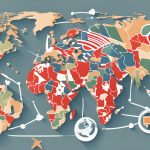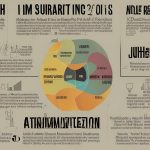Introduction
The landscape of higher education has undergone profound changes over the centuries. From the medieval origins of universities to modern-day establishments, the evolution of university curricula reflects broader societal changes, technological improvements, and shifts in educational philosophy. This article explores the historic progression, key affects, and modern-day trends in university curricula.
Historical Foundations
The concept of the college can be traced back to the Middle Ages, with extremely good examples that include the University of Bologna (founded in 1088) and the University of Paris (founded around 1150). Early curricula had been heavily motivated by the trivium (grammar, rhetoric, and logic) and quadrivium (mathematics, geometry, track, and astronomy), which had been rooted in classical schooling.
These medieval universities were mainly targeted at the liberal arts, theology, law, and medicine. The curriculum was designed to put together clergy and different found-out specialists, emphasizing rote learning and the interpretation of historic texts. The pedagogy has become instructor-focused, with a sturdy emphasis on lectures and disputations.
Renaissance and Enlightenment
The Renaissance and Enlightenment periods added giant shifts in instructional priorities. The rediscovery of classical texts and the rise of humanism encouraged a greater holistic approach to schooling, emphasizing vital wondering, individualism, and taking a look at the humanities. Universities commenced to amplify their curricula to include subjects such as philosophy, history, and literature.
The scientific revolution further transformed university curricula. The works of figures like Galileo, Newton, and Descartes delivered new clinical methodologies and empirical approaches. Universities commenced incorporating herbal sciences, emphasizing statements, experimentation, and mathematical rigor.
Industrial Revolution and Modernization
The Industrial Revolution inside the 18th and 19th centuries marked a turning point inside the evolution of university curricula. The needs of an industrializing society necessitated the improvement of technical and vocational training. Universities responded by introducing engineering, era, and carried-out sciences into their programs.
This duration additionally noticed the emergence of studies universities, particularly in Germany, where the Humboldt model of higher training turned into advanced. This model emphasized the integration of coaching and studies, selling educational freedom and the pursuit of knowledge for its own sake. Universities adopted extra-specialized and various curricula, reflecting the developing complexity of know-how and the needs of a modern-day financial system.
Twenty-First Century: Expansion and Diversification
The twentieth century witnessed unprecedented expansion and diversification in college curricula. The aftermath of World War II, the Cold War, and the distance race spurred massive funding in higher training, particularly inside the United States. The GI Bill and other instructional regulations multiplied admission to to college education, leading to a greater student body and a broader variety of academic disciplines.
Interdisciplinary research emerged as a good-sized trend, breaking down traditional obstacles between topics. Programs which include environmental science, gender research, and global members of the family meditate the interconnectedness of global troubles. The upward push of social sciences, such as sociology, psychology, and economics, creates similarly diverse college curricula.
The Digital Age and Contemporary Trends
The introduction of the digital age has profoundly impacted university curricula. Information generation, pc technological know-how, and facts analytics have emerged as indispensable additives of present-day training. Universities are increasingly incorporating digital literacy, coding, and cybersecurity into their packages, making students ready for an era-driven international.
Online education and the proliferation of Massive Open Online Courses (MOOCs) have democratized access to expertise, enabling college students to learn from everywhere in the world. This shift has induced universities to reconsider their curricula, integrating on line and hybrid learning models to deal with diverse learning styles and desires.
Globalization has also motivated university curricula, emphasizing the importance of cross-cultural competence and international views. Study overseas programs, language publications, and worldwide research have grown to be essential parts of modern schooling, preparing college students to navigate an interconnected world.
Challenges and Future Directions
As college curricula continue to conform, numerous challenges and opportunities lie ahead. One of the most demanding situations is balancing the needs of a swiftly converting activity marketplace with the foundational ideas of a liberal education. While technical competencies are vital, important thinking, conversation, and flexibility remain crucial for lengthy-term success.
The rise of synthetic intelligence and automation presents demanding situations and possibilities for college curricula. Universities must adapt to prepare students for jobs that do not yet exist while fostering creativity and ethical selection-making. Integrating AI and device learning into numerous disciplines could be important to stay applicable within the future job marketplace.
Another extensive mission is ensuring fairness and inclusivity in college curricula. As universities try to mirror diverse perspectives and stories, they ought to deal with historical biases and create inclusive studying environments. This consists of diversifying school, decolonizing curricula, and supporting underrepresented college students.
Sustainability is another essential area for future curriculum development. As weather and environmental degradation end up pressing international issues, universities have an obligation to include sustainability in their programs. This involves no longer only offering specialized publications in environmental technological know-how but also embedding sustainability ideas across all disciplines.
Conclusion
The evolution of university curricula is a dynamic and ongoing process, reflecting broader societal modifications, technological improvements, and educational philosophies. From the medieval attention on liberal arts and theology to the cutting-edge emphasis on interdisciplinary studies and digital literacy, university curricula have constantly been tailored to fulfill the needs of students and society.
As we look to the future, universities should navigate the demanding situations of a rapidly changing world while also being authentic to their core task of fostering information, critical thinking, and societal development. By embracing innovation, inclusivity, and sustainability, universities can maintain their vital position in shaping the leaders and thinkers of tomorrow.


